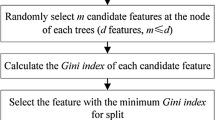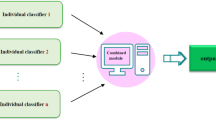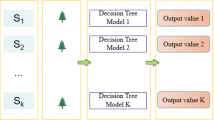Abstract
In the mining industry, the most common approach to rock fragmentation is blasting. Blasting operations generate flyrock, which is a critical and tough task, and its assessment is critical in decreasing related hazards. In this study, ensemble learning approaches such as simple averaging ensemble, weighted averaging ensemble, integrated stacking model, separate stacking model, and Bayesian-eXtreme Gradient Boosting are used to establish a predictive model for the flyrock generated by blasting. This effort resulted in a separate stacking model with a bagging met-learner, which overall outperforms other models. The mean square error, the coefficient of determination, and the coefficient of variation for this model are 0.0059, 0.974, and 0.22, respectively. The SHapley Additive exPlanations (SHAP) methodology is employed to reveal the relative relevance of the parameters affecting the model's flyrock estimation. Based on the SHAP method, the hole diameter is determined as the main factor in controlling flyrock distance, which is followed by the powder factor, hole depth, and burden-to-spacing ratio. The framework and modeling process of this research would be useful for mining engineers/designers to minimize undesired environmental issues of blasting.













Similar content being viewed by others
Data and material availability
The data are available upon request.
Code availability
The used codes are available upon request.
References
Aghajani-Bazzazi A, Osanloo M, Azimi Y, (2009) Flyrock prediction by multiple regression analysis in Esfordi phosphate mine of Iran. In: Proceedings of the 9th international symposium on rock fragmentation by blasting, Granada, Spain, pp 649–657
Ali DH, Abbas HO, Abdullah TH (2020) Numerical analysis of stress distribution during tunneling in clay stone rock. Int J Eng 33:1472–1478. https://doi.org/10.5829/ije.2020.33.08b.05
Amini H, Gholami R, Monjezi M, Torabi SR, Zadhesh J (2011) Evaluation of flyrock phenomenon due to blasting operation by support vector machine. Neural Comput Appl 21:2077–2085. https://doi.org/10.1007/S00521-011-0631-5
Armaghani DJ, Hajihassani M, Mohamad ET, Marto A, Noorani SA (2014) Blasting-induced flyrock and ground vibration prediction through an expert artificial neural network based on particle swarm optimization. Arab J Geosci 7:5383–5396
Armaghani DJ, Koopialipoor M, Bahri M, Hasanipanah M, Tahir MM (2020) A SVR-GWO technique to minimize flyrock distance resulting from blasting. Bull Eng Geol Environ. https://doi.org/10.1007/s10064-020-01834-7
Asteris PG, Mamou A, Hajihassani M, Hasanipanah M, Koopialipoor M, Le TT, Kardani N, Armaghani DJ (2021) Soft computing based closed form equations correlating L and N-type Schmidt hammer rebound numbers of rocks. Transp Geotech 29:100588
Asteris PG, Lourenço PB, Roussis PC, Adami CE, Armaghani DJ, Cavaleri L, Chalioris CE, Hajihassani M, Lemonis ME, Mohammed AS (2022) Revealing the nature of metakaolin-based concrete materials using artificial intelligence techniques. Constr Build Mater 322:126500
Barkhordari MS, Tehranizadeh M (2021) Response estimation of reinforced concrete shear walls using artificial neural network and simulated annealing algorithm. Structures 34:1155–1168. https://doi.org/10.1016/j.istruc.2021.08.053
Barkhordari MS, Feng D-C, Tehranizadeh M (2022) Efficiency of hybrid algorithms for estimating the shear strength of deep reinforced concrete beams. Period Polytech Civ Eng. https://doi.org/10.3311/PPci.19323
Breiman L (2001) Random forests. Mach Learn 45:5–32
Brochu E, Cora VM and De Freitas N (2010) A tutorial on Bayesian optimization of expensive cost functions, with application to active user modeling and hierarchical reinforcement learning. arXiv preprint arXiv:1012.2599
Che J, Wang J (2014) Short-term load forecasting using a kernel-based support vector regression combination model. Appl Energy 132:602–609. https://doi.org/10.1016/j.apenergy.2014.07.064
Chen T, Guestrin C, (2016) XGBoost: a scalable tree boosting system. In: Proceedings of the 22nd ACM SIGKDD international conference on knowledge discovery and data mining, (pp 785–794). New York, NY, USA ACM 10
Cortes C, Vapnik V (1995) Support-vector networks. Mach Learn 20:273–297
Faradonbeh RS, Armaghani DJ, Monjezi M (2016a) Development of a new model for predicting flyrock distance in quarry blasting: a genetic programming technique. Bull Eng Geol Environ 75:993–1006
Faradonbeh RS, Armaghani DJ, Monjezi M, Mohamad ET (2016b) Genetic programming and gene expression programming for flyrock assessment due to mine blasting. Int J Rock Mech Min Sci 88:254–264
Friedman JH (2001) Greedy function approximation: a gradient boosting machine. Ann Stat. https://doi.org/10.1214/aos/1013203451
Georgioudakis M, Plevris V (2020) A Comparative study of differential evolution variants in constrained structural optimization. Front Built Environ. https://doi.org/10.3389/fbuil.2020.00102
Ghasemi E, Sari M, Ataei M (2012) Development of an empirical model for predicting the effects of controllable blasting parameters on flyrock distance in surface mines. Int J Rock Mech Min Sci 52:163–170. https://doi.org/10.1016/j.ijrmms.2012.03.011
Goodier J (2011) The Cambridge dictionary of statistics. Ref Rev 25:37–38. https://doi.org/10.1108/09504121111145401
Guo H, Nguyen H, Bui X-N, Armaghani DJ (2021) A new technique to predict fly-rock in bench blasting based on an ensemble of support vector regression and GLMNET. Eng Comput 37:421–435. https://doi.org/10.1007/s00366-019-00833-x
Guo H, Zhou J, Koopialipoor M, Armaghani DJ, Tahir M (2021b) Deep neural network and whale optimization algorithm to assess flyrock induced by blasting. Eng Comput 37:173–186. https://doi.org/10.1007/S00366-019-00816-Y
Hajihassani M, Armaghani DJ, Sohaei H, Mohamad ET, Marto A (2014) Prediction of airblast-overpressure induced by blasting using a hybrid artificial neural network and particle swarm optimization. Appl Acoust 80:57–67
Han H, Armaghani DJ, Tarinejad R, Zhou J, Tahir MM (2020) Random forest and bayesian network techniques for probabilistic prediction of Flyrock induced by blasting in quarry sites. Nat Resour Res 29:655–667. https://doi.org/10.1007/s11053-019-09611-
Hasanipanah M, Amnieh HB (2020) A fuzzy rule-based approach to address uncertainty in risk assessment and prediction of blast-induced Flyrock in a quarry. Nat Resour Res. https://doi.org/10.1007/s11053-020-09616-4
Hasanipanah M, Armaghani DJ, Amnieh HB, Majid MZA, Tahir MMD (2017) Application of PSO to develop a powerful equation for prediction of flyrock due to blasting. Neural Comput Appl 28:1043–1050
Hasanipanah M, Monjezi M, Shahnazar A, Armaghani DJ, Farazmand A (2015) Feasibility of indirect determination of blast induced ground vibration based on support vector machine. Measurement 75:289–297
Herman J, Usher W (2017) SALib: an open-source python library for sensitivity analysis. J Open Source Softw 2, 97. https://doi.org/10.21105/joss.00097
Kamiński B, Jakubczyk M, Szufel P (2018) A framework for sensitivity analysis of decision trees. Cent Eur J Oper Res 26:135–159. https://doi.org/10.1007/s10100-017-0479-6
Khademi A, Behfarnia K, Kalman Šipoš T, Miličević I (2021) The use of machine learning models in estimating the compressive strength of recycled brick aggregate concrete. Comput Eng Phys Model 4:1–25. https://doi.org/10.22115/cepm.2021.297016.1181
Li D, Koopialipoor M, Armaghani DJ (2021) A combination of fuzzy delphi method and ANN-based models to investigate factors of flyrock induced by mine blasting. Nat Resour Res. https://doi.org/10.1007/s11053-020-09794-1
Lin H, Kang W-H, Oh J, Canbulat I (2020) Estimation of in-situ maximum horizontal principal stress magnitudes from borehole breakout data using machine learning. Int J Rock Mech Min Sci 126:104199. https://doi.org/10.1016/j.ijrmms.2019.104199
Little TN, Blair DP (2010) Mechanistic Monte Carlo models for analysis of flyrock risk. Rock Fragm Bl 9:641–647
Lu X, Hasanipanah M, Brindhadevi K, Amnieh HB, Khalafi S (2020) ORELM: a novel machine learning approach for prediction of flyrock in mine blasting. Nat Resour Res 29:641–654. https://doi.org/10.1007/s11053-019-09532-2
Lundberg SM, Nair B, Vavilala MS, Horibe M, Eisses MJ, Adams T, Liston DE, Low DK-W, Newman S-F, Kim J, Lee S-I (2018) Explainable machine-learning predictions for the prevention of hypoxaemia during surgery. Nat Biomed Eng 2:749–760. https://doi.org/10.1038/s41551-018-0304-0
Lundberg SM, Lee S-I (2017) A unified approach to interpreting model predictions. In: Proceedings of the 31st international conference on neural information processing systems, pp 4768–4777
Lundborg N, Persson A, Ladegaard-Pedersen A, Holmberg R (1975) Keeping the lid on flyrock in open-pit blasting. Eng Min J 176:95–100
Mohamad ET, Hajihassani M, Armaghani DJ, Marto A (2012) Simulation of blasting-induced air overpressure by means of artificial neural networks. Int Rev Model Simul 5(6):2501–2506
Murlidhar BR, Kumar D, Jahed Armaghani D, Mohamad ET, Roy B, Pham BT (2020) A novel intelligent ELM-BBO technique for predicting distance of mine blasting-induced flyrock. Nat Resour Res. https://doi.org/10.1007/s11053-020-09676-6
Naderpour H, Rafiean AH, Fakharian P (2018) Compressive strength prediction of environmentally friendly concrete using artificial neural networks. J Build Eng 16:213–219. https://doi.org/10.1016/j.jobe.2018.01.007
Naderpour H, Rezazadeh Eidgahee D, Fakharian P, Rafiean AH, Kalantari SM (2020) A new proposed approach for moment capacity estimation of ferrocement members using group method of data Handling. Eng Sci Technol an Int J 23:382–391. https://doi.org/10.1016/j.jestch.2019.05.013
Nayak SC, Nayak SK, Panda SK (2021) Assessing compressive strength of concrete with extreme learning machine. J Soft Comput Civ Eng 5:68–85. https://doi.org/10.22115/scce.2021.286525.1320
Nguyen H, Bui X-N, Choi Y, Lee CW, Armaghani DJ (2021) A novel combination of whale optimization algorithm and support vector machine with different kernel functions for prediction of blasting-induced fly-rock in quarry mines. Nat Resour Res 30:191–207. https://doi.org/10.1007/s11053-020-09710-7
Nikafshan Rad H, Bakhshayeshi I, Wan Jusoh WA, Tahir MM, Foong LK (2020) Prediction of flyrock in mine blasting: a new computational intelligence approach. Nat Resour Res 29:609–623. https://doi.org/10.1007/s11053-019-09464-x
Parsajoo M, Armaghani DJ, Mohammed AS, Khari M, Jahandari S (2021) Tensile strength prediction of rock material using non-destructive tests: a comparative intelligent study. Transp Geotech 31:100652. https://doi.org/10.1016/J.TRGEO.2021.100652
Pham BT, Nguyen MD, Nguyen-Thoi T, Ho LS, Koopialipoor M, Quoc NK, Armaghani DJ, Van Le H (2020) A novel approach for classification of soils baseds on laboratory tests using Adaboost tree and ANN modeling. Transp Geotech. https://doi.org/10.1016/j.trgeo.2020.100508
Pizarro PN, Massone LM (2021) Structural design of reinforced concrete buildings based on deep neural networks. Eng Struct 241:112377. https://doi.org/10.1016/j.engstruct.2021.112377
Rahul AK, Shivhare N, Kumar S, Dwivedi SB, Dikshit PKS (2021) Modelling of daily suspended sediment concentration using FFBPNN and SVM algorithms. J Soft Comput Civ Eng 5:120–134. https://doi.org/10.22115/scce.2021.283137.1305
Roth J (1979) A model for the determination of flyrock range as a function of shot conditions. NTIS, USA
Saber A (2021) Effects of window-to-wall ratio on energy consumption: application of numerical and ANN approaches. J Soft Comput Civ Eng. 5:41–56. https://doi.org/10.22115/scce.2021.281977.1299
Safaeian Hamzehkolaei N, Alizamir M (2021) Performance evaluation of machine learning algorithms for seismic retrofit cost estimation using structural parameters. J Soft Comput Civ Eng 5:32–57. https://doi.org/10.22115/scce.2021.284630.1312
Saisubramanian R, Murugaiyan V (2021) Prediction of compression index of marine clay using artificial neural network and multilinear regression models. J Soft Comput Civ Eng 5:114–124. https://doi.org/10.22115/scce.2021.287537.1324
Snoek J, Larochelle H, Adams RP (2012) Practical bayesian optimization of machine learning algorithms. Adv Neural Inf Process Syst
Workman JL, Calder PN (1994) Flyrock prediction and control in surface mine blasting. International Society of Explosives Engineers, Cleveland, OH (United States)
Yang H, Wang H, Zhou X (2016) Analysis on the rock–cutter interaction mechanism during the TBM tunneling process. Rock Mech Rock Eng 49:1073–1090
Yang H, Wang Z, Song K (2020) A new hybrid grey wolf optimizer-feature weighted-multiple kernel-support vector regression technique to predict TBM performance. Eng Comput. https://doi.org/10.1007/s00366-020-01217-2
Yang H, Song K, Zhou J (2022) Automated recognition model of geomechanical information based on operational data of tunneling boring machines. Rock Mech Rock Eng. https://doi.org/10.1007/s00603-021-02723-5
Ye J, Koopialipoor M, Zhou J, Armaghani DJ, He X (2021) A novel combination of tree-based modeling and Monte Carlo simulation for assessing risk levels of flyrock induced by mine blasting. Nat Resour Res 30:225–243. https://doi.org/10.1007/S11053-020-09730-3
Zarbazoo Siahkali M, Ghaderi AA, Bahrpeyma AH, Rashki M, Safaeian Hamzehkolaei N (2021) Estimating pier scour depth: comparison of empirical formulations with ANNs, GMDH, MARS, and Kriging. J AI Data Min 9:109–128
Zhang G, Hamzehkolaei NS, Rashnoozadeh H, Band SS, Mosavi A (2021a) Reliability assessment of compressive and splitting tensile strength prediction of roller compacted concrete pavement: introducing MARS-GOA-MCS. Int J Pavement Eng. https://doi.org/10.1080/10298436.2021.1990920
Zhang X-P, Xie W-Q, Liu Q-S, Yang X-M, Tang S-H, Wu J (2021b) Development and application of an in-situ indentation testing system for the prediction of tunnel boring machine performance. Int J Rock Mech Min Sci 147:104899. https://doi.org/10.1016/j.ijrmms.2021.104899
Zhou H-C, Long JR, Yaghi OM (2012) Introduction to metal-organic frameworks. Chem Rev 112:673–674. https://doi.org/10.1021/cr300014x
Zhou J, Aghili N, Ghaleini EN, Bui DT, Tahir MM, Koopialipoor M (2020) A Monte Carlo simulation approach for effective assessment of flyrock based on intelligent system of neural network. Eng Comput 36:713–723. https://doi.org/10.1007/s00366-019-00726-z
Zhou J, Chen C, Wang M, Khandelwal M (2021) Proposing a novel comprehensive evaluation model for the coal burst liability in underground coal mines considering uncertainty factors. Int J Min Sci Technol 31(5):799–812
Zhou Jian, Qiu Y, Khandelwal M, Zhu S, Zhang X (2021) Developing a hybrid model of Jaya algorithm-based extreme gradient boosting machine to estimate blast-induced ground vibrations. Int J Rock Mech Min Sci 145:104856
Zhou M, Chen J, Huang H, Zhang D, Zhao S, Shadabfar M (2021c) Multi-source data driven method for assessing the rock mass quality of a NATM tunnel face via hybrid ensemble learning models. Int J Rock Mech Min Sci 147:104914. https://doi.org/10.1016/j.ijrmms.2021.104914
Zorlu K, Gokceoglu C, Ocakoglu F, Nefeslioglu HA, Acikalin S (2008) Prediction of uniaxial compressive strength of sandstones using petrography-based models. Eng Geol 96:141–158
Acknowledgements
The authors of this research would like to express their appreciation to the Universiti Tecknologi Malaysia for providing the database for this study.
Funding
This research did not receive any specific grant from funding agencies in the public, commercial, or not-for-profit sectors.
Author information
Authors and Affiliations
Corresponding author
Ethics declarations
Conflict of interest
The authors declare that there is no conflict of interest.
Additional information
Editorial responsibility: Mohammad Saghir Khan.
Rights and permissions
About this article
Cite this article
Barkhordari, M.S., Armaghani, D.J. & Fakharian, P. Ensemble machine learning models for prediction of flyrock due to quarry blasting. Int. J. Environ. Sci. Technol. 19, 8661–8676 (2022). https://doi.org/10.1007/s13762-022-04096-w
Received:
Revised:
Accepted:
Published:
Issue Date:
DOI: https://doi.org/10.1007/s13762-022-04096-w




